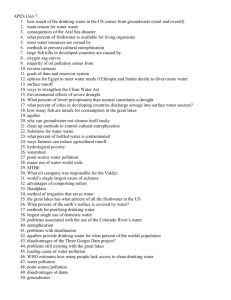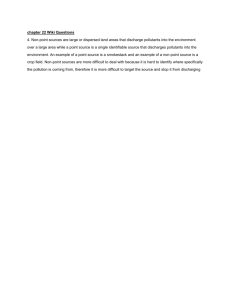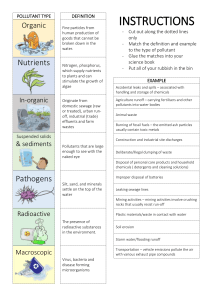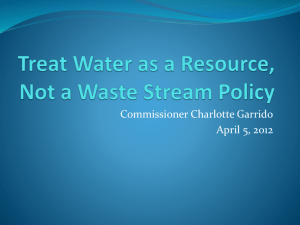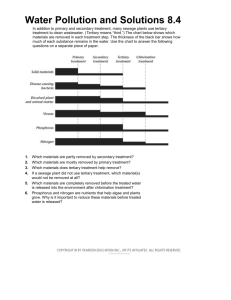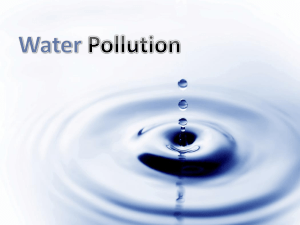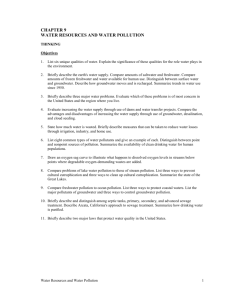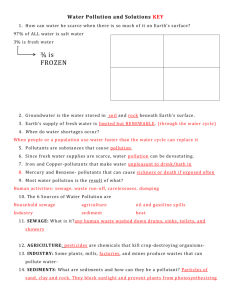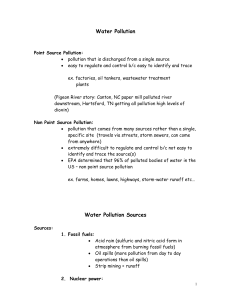Chapter 13-20 summary
advertisement
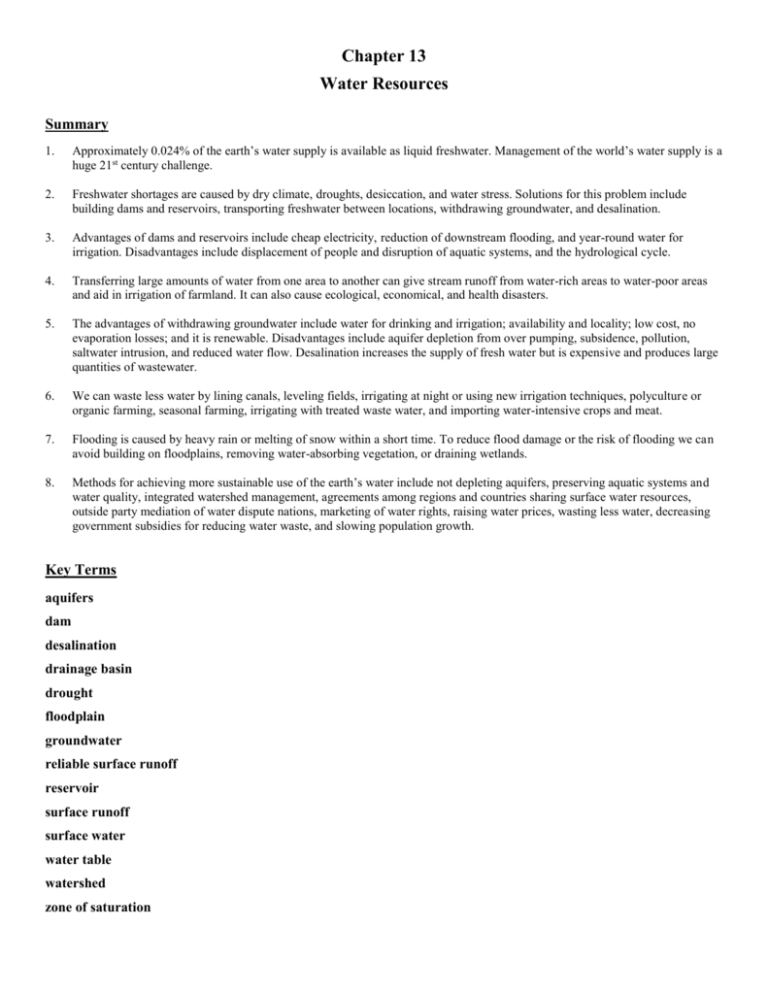
Chapter 13 Water Resources Summary 1. Approximately 0.024% of the earth’s water supply is available as liquid freshwater. Management of the world’s water supply is a huge 21st century challenge. 2. Freshwater shortages are caused by dry climate, droughts, desiccation, and water stress. Solutions for this problem include building dams and reservoirs, transporting freshwater between locations, withdrawing groundwater, and desalination. 3. Advantages of dams and reservoirs include cheap electricity, reduction of downstream flooding, and year-round water for irrigation. Disadvantages include displacement of people and disruption of aquatic systems, and the hydrological cycle. 4. Transferring large amounts of water from one area to another can give stream runoff from water-rich areas to water-poor areas and aid in irrigation of farmland. It can also cause ecological, economical, and health disasters. 5. The advantages of withdrawing groundwater include water for drinking and irrigation; availability and locality; low cost, no evaporation losses; and it is renewable. Disadvantages include aquifer depletion from over pumping, subsidence, pollution, saltwater intrusion, and reduced water flow. Desalination increases the supply of fresh water but is expensive and produces large quantities of wastewater. 6. We can waste less water by lining canals, leveling fields, irrigating at night or using new irrigation techniques, polyculture or organic farming, seasonal farming, irrigating with treated waste water, and importing water-intensive crops and meat. 7. Flooding is caused by heavy rain or melting of snow within a short time. To reduce flood damage or the risk of flooding we can avoid building on floodplains, removing water-absorbing vegetation, or draining wetlands. 8. Methods for achieving more sustainable use of the earth’s water include not depleting aquifers, preserving aquatic systems and water quality, integrated watershed management, agreements among regions and countries sharing surface water resources, outside party mediation of water dispute nations, marketing of water rights, raising water prices, wasting less water, decreasing government subsidies for reducing water waste, and slowing population growth. Key Terms aquifers dam desalination drainage basin drought floodplain groundwater reliable surface runoff reservoir surface runoff surface water water table watershed zone of saturation Chapter 20 Water Pollution Summary 1. Water pollutants include infectious agents from human or animal wastes; oxygen-demanding wastes from sewage, paper mills, and food processing; inorganic chemicals from surface runoff, industrial effluents, and household cleaners; organic chemicals from oil, plastics, pesticides, and detergents; sediment from erosion; and thermal pollution from power plant cooling. 2. Water pollution problems in streams and lakes relate to chemical and biological pollutants, with the greater problems being cultural eutrophication. 3. Groundwater pollution is caused by leaks from waste ponds and underground storage tanks, chemical dumping or spilling, surface runoff, and fertilizers. It can be prevented by finding substitutes for toxic chemicals, installing monitoring wells near landfills and underground tanks, requiring leak detectors on underground tanks, banning hazardous waste disposal in landfills and injection wells, and storing harmful liquids in aboveground tanks. 4. Water pollution of oceans relates to nitrogen oxide from industry and cars, heavy metals from effluents, toxic sediment, sewage, runoff of pesticides, manure, fertilizers, and red tides from excess nitrogen. 5. Reduction or prevention of water pollution can be achieved through reduction of use of toxic pollutants, banning of ocean dumping of sludge, protection of sensitive areas from oil drilling and oil transport, regulation of coastal development, and regulation of sewage treatment. 6. The U.S. Safe Drinking Water Act of 1974 requires that drinking water contain less than the maximum contaminant levels for any pollutants that may have adverse effects on human health. Restructuring of water treatment systems, enforcing current regulations, banning the use of lead in new structures, and chemical tests and biological indicators can be used to make drinking water safer. Key Terms cultural eutrophication eutrophication nonpoint sources point sources primary sewage treatment secondary sewage treatment septic tank sludge water pollution
